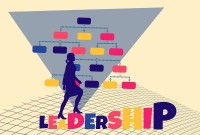- Home
- Business Processes
- Industry Knowledge
- Aerospace Industry
- Automotive Industry
- Banking Domain
- BFSI Industry
- Consumer/ FMCG Industry
- Chemicals Industry
- Engineering & Construction
- Energy Industry
- Education Domain
- Finance Domain
- Hospitality Domain
- Healthcare Industry
- Insurance Domain
- Retail Industry
- Travel and Tourism Domain
- Telecom Industry
- Leadership Skills
- eLearning
- Home
- Leadership
- Leadership Styles
- Agile Leadership Style
Agile Leadership Style
Charles Darwin had once commented that “It is not the strongest or the most intelligent who will survive but those who can best manage change.” Agility means the capability of rapidly and efficiently adapting to changes and recently, agility has been applied in the context of software development, agile enterprise, and agile leadership. Agile leaders play an important, even essential, role in scaling agility in an organization. Understand how being an agile leader helps in effectively catalyzing organizational change.
What is Agile Leadership?
Adaptability; the ability to change (or be changed) to fit new circumstances and Agility; the capability to rapidly and efficiently adapt to change, is a crucial skill for leaders. It is the art of being flexible under the influence of rapidly changing external conditions. Being an agile leader means being flexible, responsive to change, and willing to learn and adopt new ways, leading to effectively survive and succeed in the complex modern competitive business environment. People who score high on the adaptability and agility competency are able to deal more positively with the change, and they are able to adapt their approach to changing needs and shift their priorities.
Another definition for “Agile Leadership” is the application of the agile principles to the field of leadership. It is encompassing the processes, tools, and rules of Agile to manage teams and projects and develop new leadership paradigms to deliver better results.
Agile Leadership Model:
Agile leaders are leaders who are able to reflect, see possibilities, and reframe their thinking constantly. The traditional Agile Scrum Model encompasses the organization of the project team, roles and responsibilities of the team members, the artifacts, and the rules under which the project team operates to deliver expectations. Agile Leadership includes the work environment as well as the specific leadership abilities expected from the managers and stakeholders to make the project team successful.
According to the Agile Leadership Model, there are five levels of leadership agility:
1. Expert Level (solving key problems):
The expert is more tactical and has a problem-solving orientation. Believes a leader’s power depends upon the expertise and positional authority, acts as more of a supervisor than a manager, and usually too caught up in details to lead in a strategic manner.
2. Achiever Level (accomplishing key outcomes):
The Achiever is more strategic and outcome-oriented, believes that power comes not only from authority and expertise but also from motivating others, operates as a full-fledged manager, and will often accept feedback, if helpful in achieving desired outcomes.
3. Catalyst Level (mobilizing new endeavors and breakthroughs):
The Catalyst is visionary with facilitative orientation, believes that leaders articulate an innovative, inspiring vision and empower people to transform the vision into reality, acts as team leader and facilitator to create a highly participative team, welcomes the open exchange of views on difficult issues, empowers direct reports and uses team development as a vehicle for leadership development.
4. Co-Creator Level (realizing a shared purpose):
The Cocreator is oriented toward shared purpose and collaboration, believes leadership is ultimately a service to others, develops key stakeholder relationships, may create companies or units where corporate responsibility is an integral practice, develops collaborative leadership teams, where members feel fully responsible not only for their own areas but also for the organization they collectively manage.
5. Synergist Level (evoking new and audacious possibilities):
The Synergist is holistic oriented, experiences leadership as participation in a palpable sense of life purpose that benefits others while serving as a vehicle for personal transformation maintains a deep, empathetic awareness of conflicting stakeholder interests, including their own, capable of moving fluidly between various team leadership styles, can amplify or shape group energy dynamics to bring about mutually beneficial results, cultivates a present-centered awareness that augments external feedback and supports a strong, subtle connection with others, even during challenging conversations.
Characteristics of Agile Leaders:
1. They use a democratic approach to management which helps them in enforcing change to the behaviors
2. Provides empowerment to the team members and let them determine how to accomplish their tasks, are focused, and always keep track of the timelines
3. Demonstrate a greater openness to ideas and innovations; applies standard procedures more flexibly
4. Defines the desired vision and continuously adapt to changing situations, unexpected demands, and changing strategies
5. Acts as a change agent within the organization and have the ability to deal with situations they have never dealt with before
6. Makes concerted effort to understand people of different cultures and develops cultural adaptability
7. Are willing to get out of one’s comfort zone and learn continuously, keep upgrading their skills
8. Challenges the status quo; Are open to new ideas
9. Uses adaptable, methodical and organized approach to problem-solving; are fast and effective problem solvers and tend to solve when faced with new and challenging situations
Books for reading/References:
Leadership Agility: Five Levels of Mastering for Anticipating and Initiating Change by Bill Joiner and Stephen Josephs (2007)
Related Links
You May Also Like
-
Understanding of how individuals of different cultures interact with each other is very important. Not all individuals can adapt to the leadership styles expected in a different culture whether that culture is organizational or national. In a fast-paced business environment, developing a richer understanding and sensitivity to other cultures is a skill that leaders must possess. Learn to be effective in a cross-cultural setting.
-
Authentic leadership is an approach to leadership that emphasizes building the leader's legitimacy through honest relationships with followers which value their input and are built on an ethical foundation. The authentic leader acts upon his or her values and beliefs, and inspires others to do the same, is committed to know and develop oneself. Are you committed to developing yourself; know your motivations and the purpose of your leadership? Read this article to know more about authentic leadership style and discovering your authentic self.
-
Narcissistic leadership is a leadership style in which the leader is only interested in him. Narcissists are good for companies that need people with vision and the courage to take them in new directions. Such leaders sometime might be highly successful, but is it a style to be followed. Learn the various types of narcissistic leadership and the characteristics of such leaders.
-
Bureaucratic leadership relies on a clear chain of command and strict regulations. Bureaucratic leadership style is a very decent style for work involving serious safety risks, such as handling toxic substances, moving large objects. The focus is on compliance with rules and laid down procedures to make sure that the group is doing their job correctly and safely. Learn some advantages and disadvantages of this style and situations in which this style could prove to be effective.
-
What are the functions which a leader does to establish as a leader? What are the activities undertaken by them to become great leaders, rather revolutionary leaders? The most important tasks done by a leader in all situations are defining the vision, mission, and goals, leading the team, administrative functions, motivating followers, decision making and conflict resolution, and continuous development.
-
We define Lean as the systematic elimination of waste through a continual effort to decrease inefficiency; the lean leader strives to create a more efficient organization. Lean leadership is a philosophy. It is a consistent way of thinking and being in your role as a leader. The focus of this approach is on raising new leaders and help their team embrace a culture of continuous improvement. Learn what we mean by lean leadership style and its principles.
-
A good leadership style is something that every effective leader must have in order to succeed, but identifying what that entails or does not entails might be difficult to understand. Most of the research on leadership focuses on the exemplary, best practices, and positive attributes of effective and successful leaders. This article talks about a new approach to learn leadership using lessons from bad leadership. That is the lessons to be learned by examining leaders who have not effectively exercised their power, authority, or influence.
-
Appreciative leaders encourage contributions from those around them and facilitate the discussion to mutually solve problems. Understand the concept of Appreciative Leadership and learn about tools to create and ask powerful questions - that lead to new discoveries and possibilities. Instead of focusing on what’s wrong in the workplace, learn about, and build upon what works. Learn in this article the art to apply appreciative inquiry to specific situations and challenges at your workplace.
-
Frederick Winslow Taylor started the “Scientific Management Movement”, and attempted to study the work process scientifically. Scientific management, also called Taylorism, was a theory of management that analyzed and synthesized workflows. It is a system for increasing the efficiency of manpower to its maximum potential and streamlining production to improve efficiency. This article explores this theory in more detail.
-
This style is characterized by leaders making decisions for others and expecting followers to follow instructions. The directive leader is adept at giving instructions, setting expectations, and establishing timelines and performance standards. However, it is possible for the same leaders to display both directive and supportive behavior as per the demands of the situation.
Explore Our Free Training Articles or
Sign Up to Start With Our eLearning Courses

About Us
Learning
© 2023 TechnoFunc, All Rights Reserved










